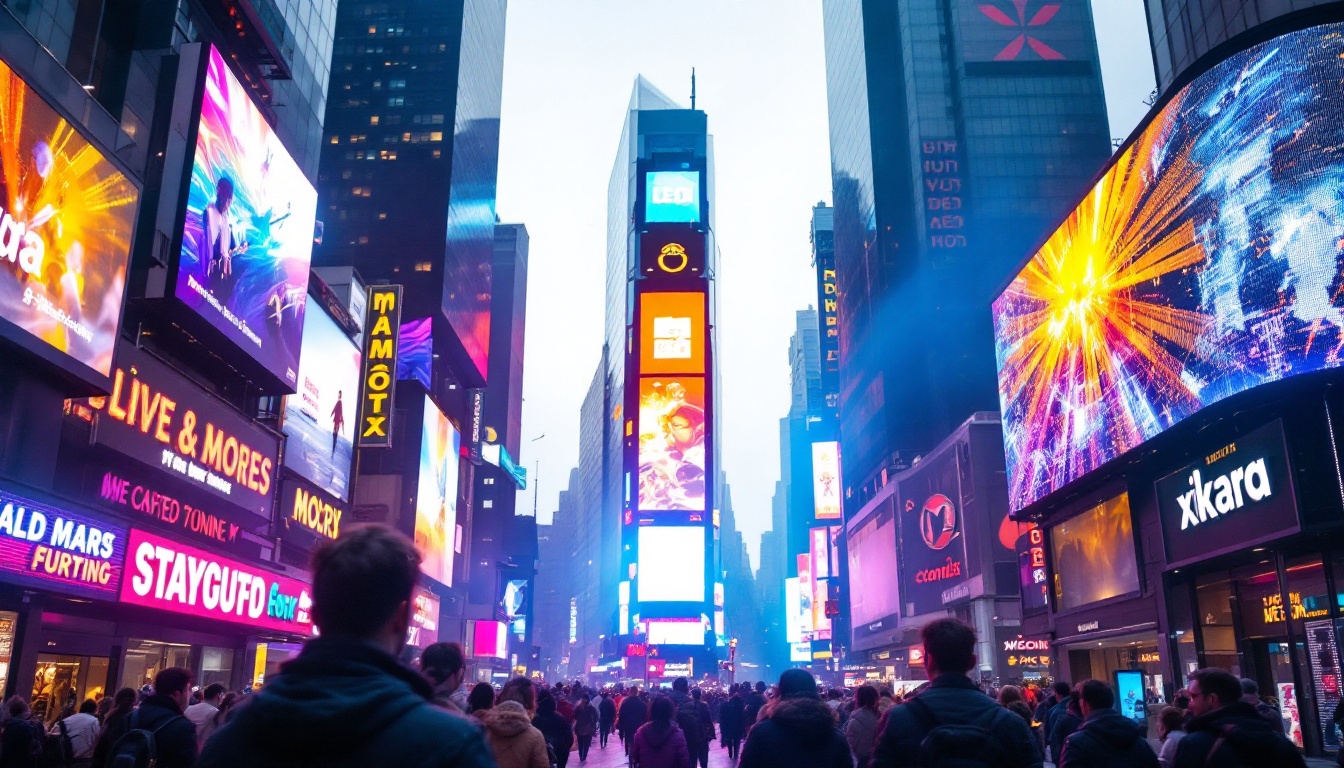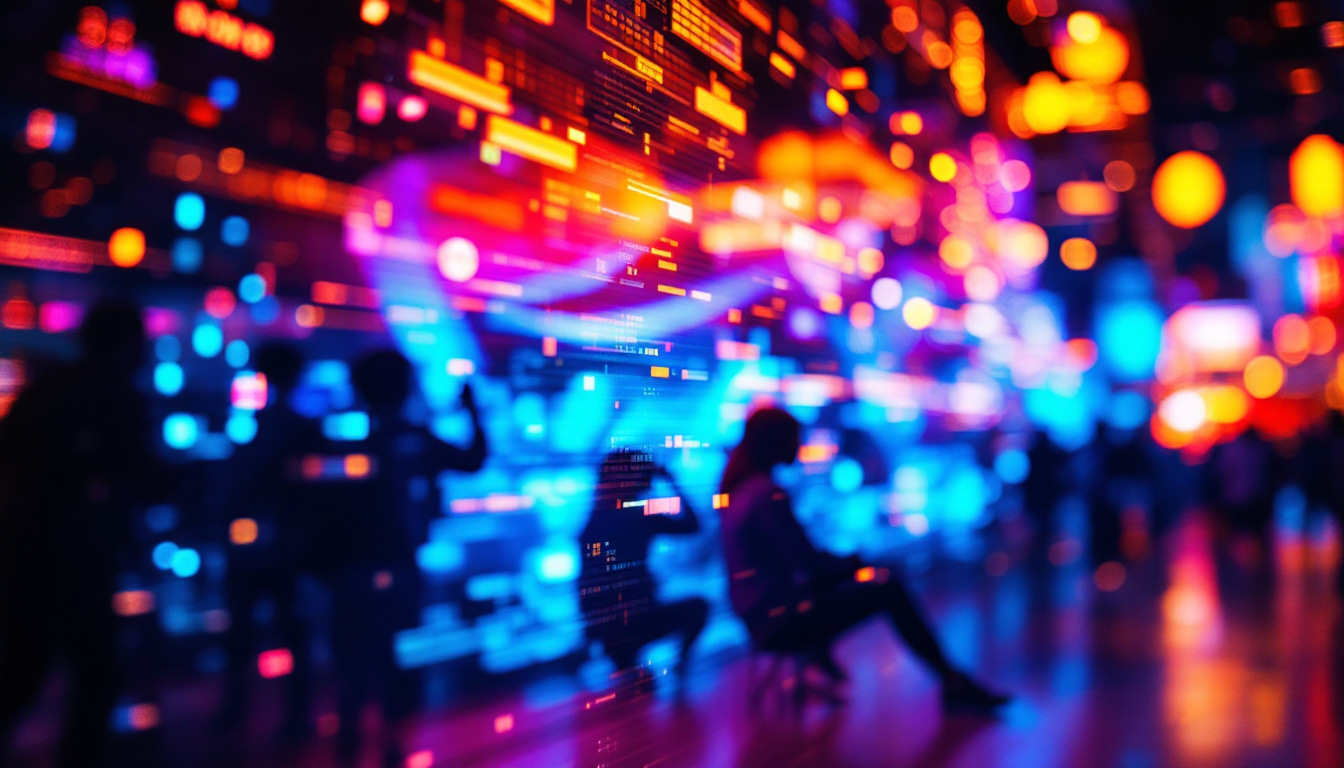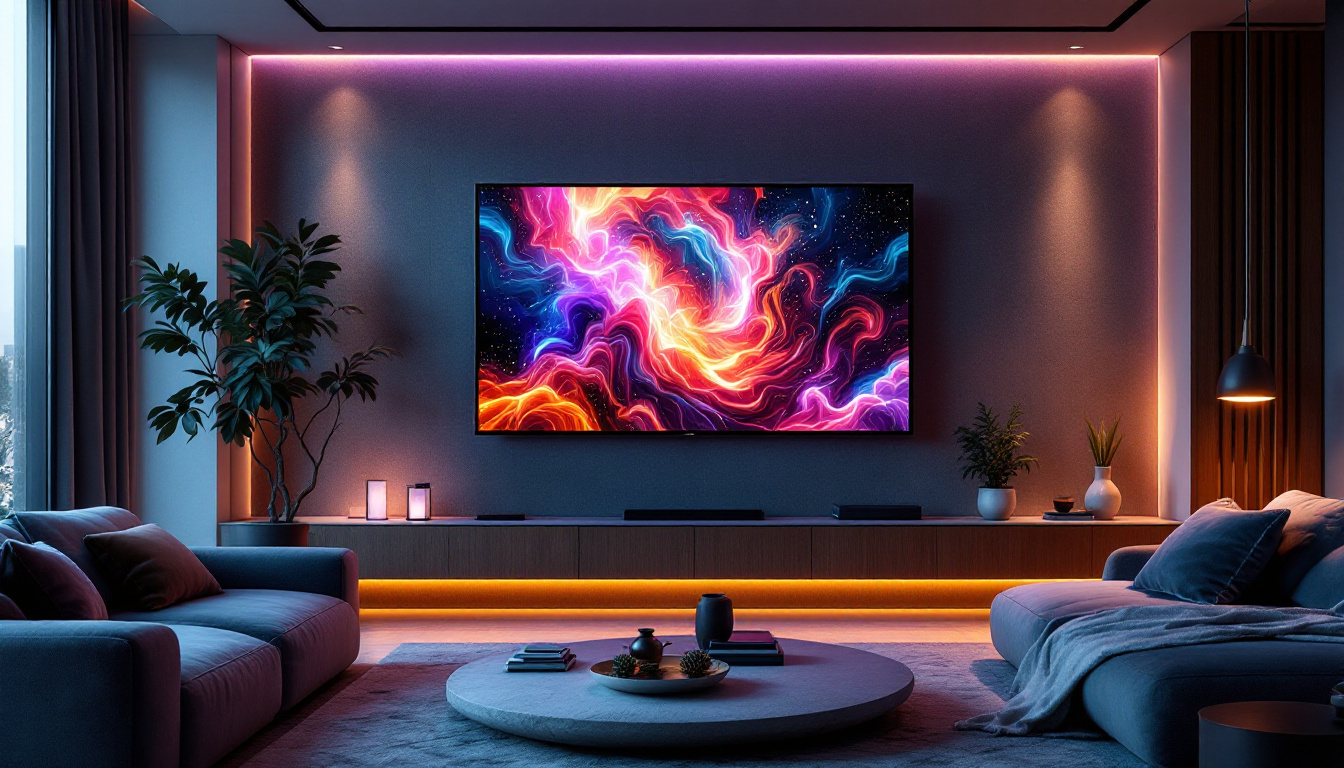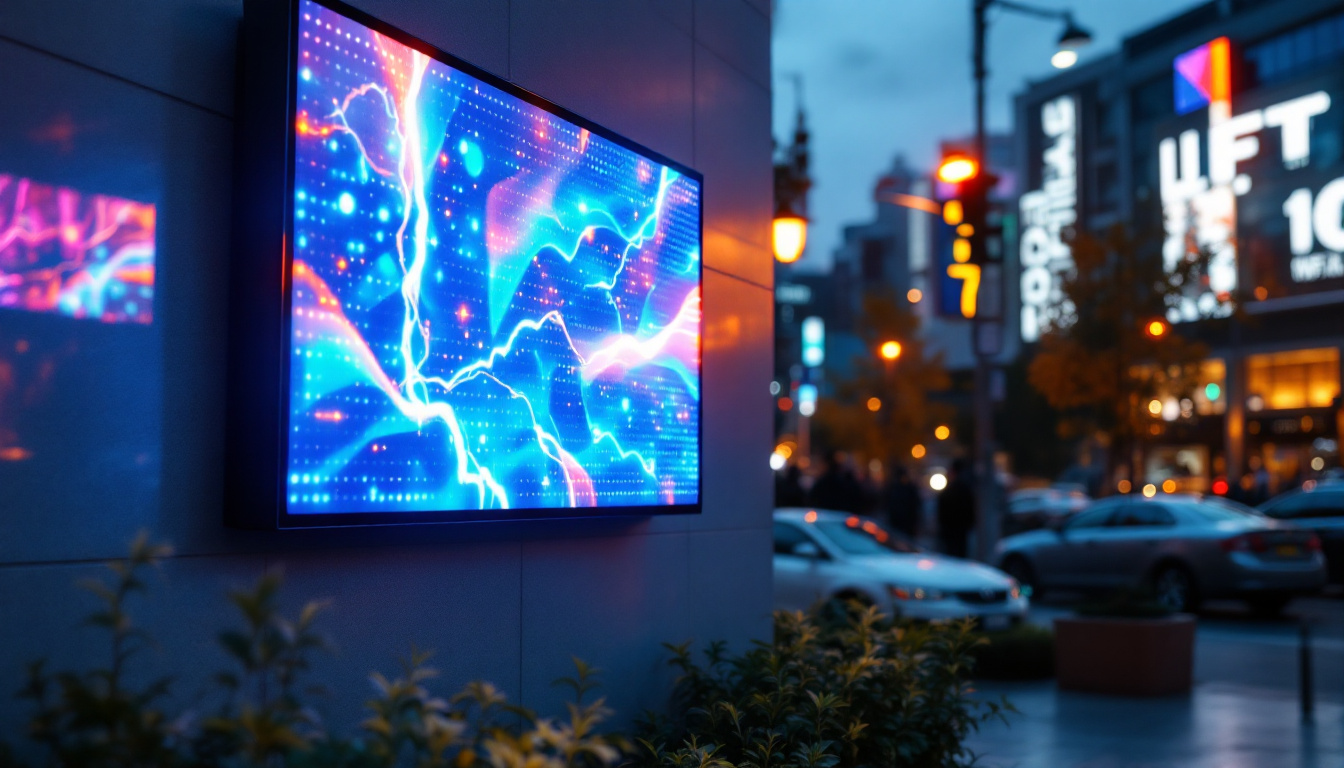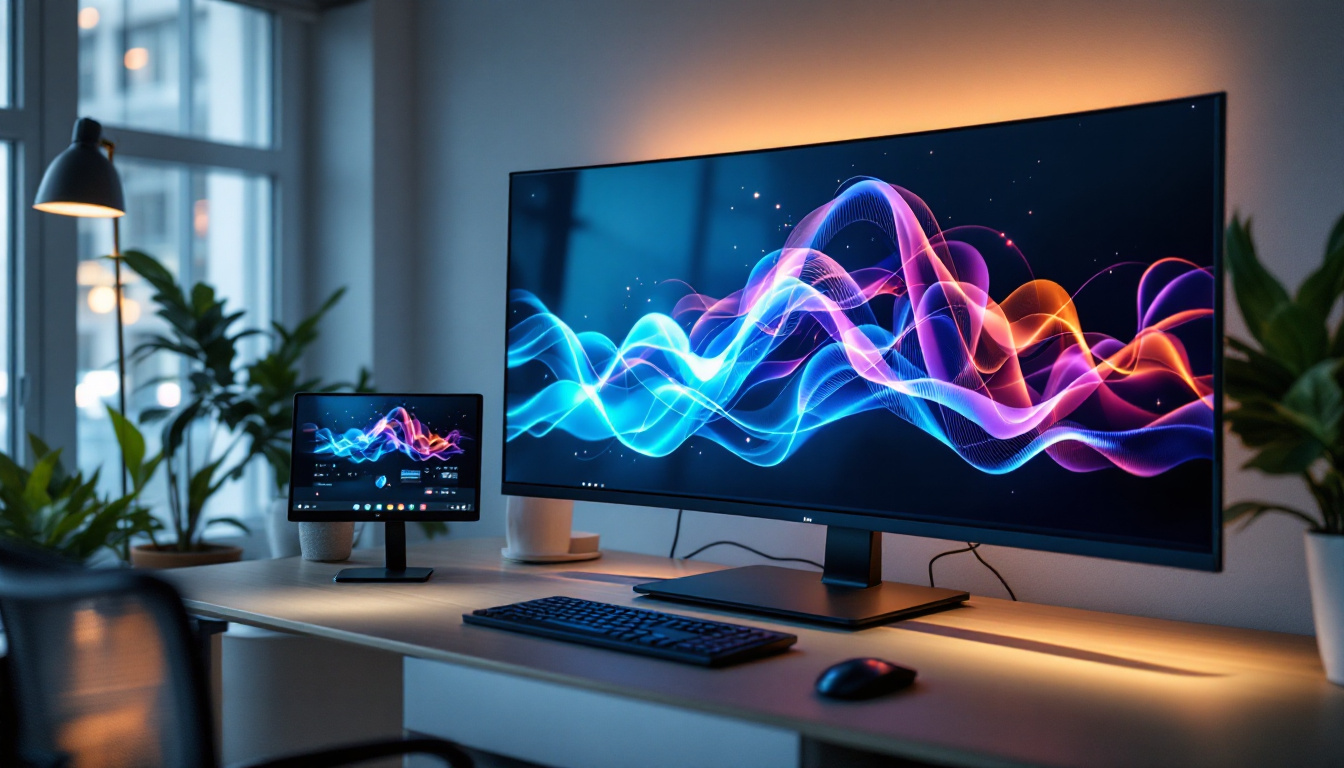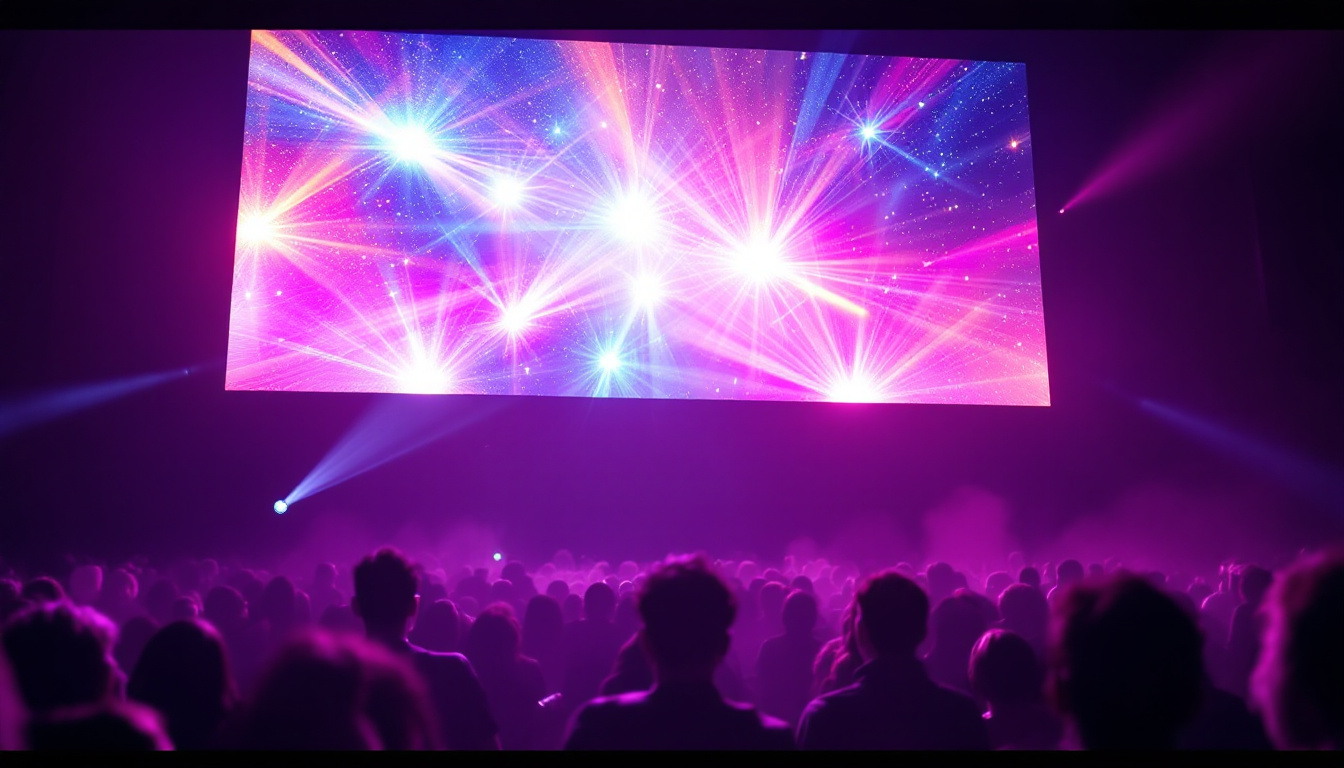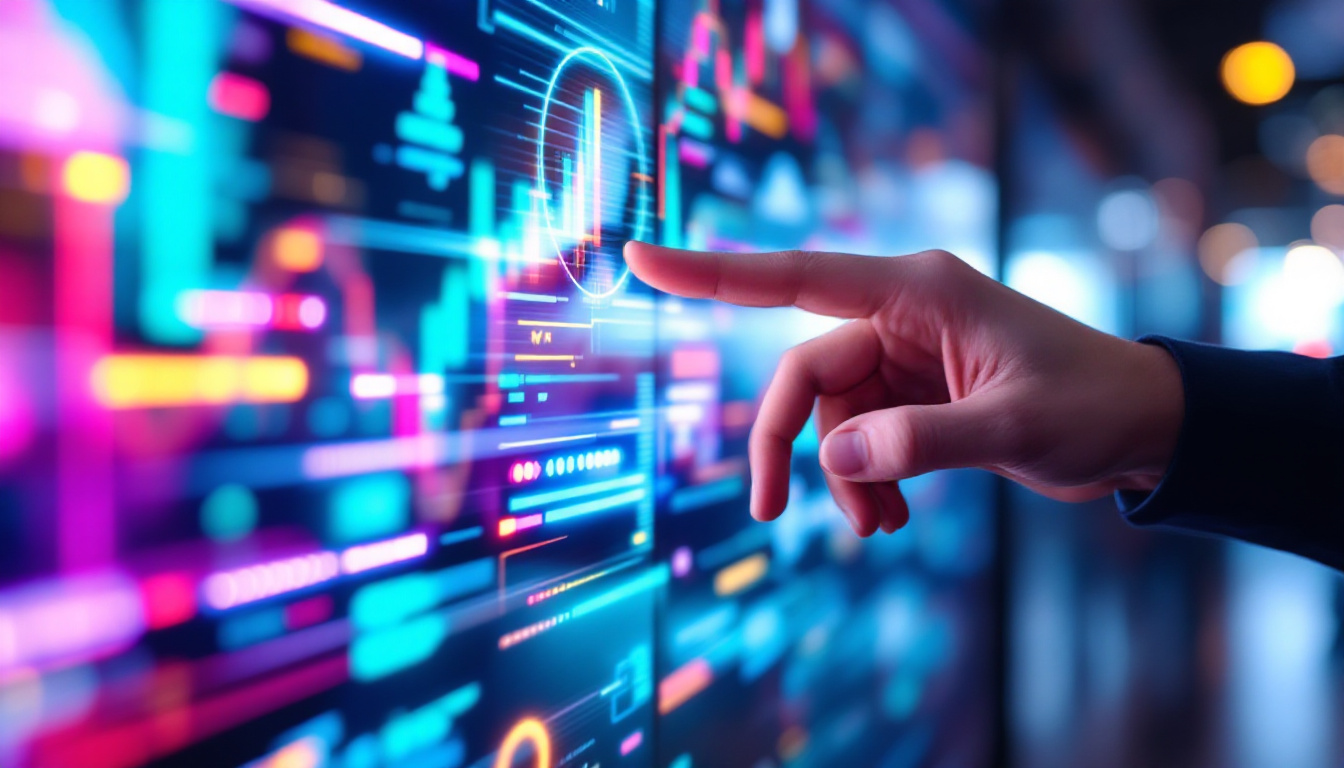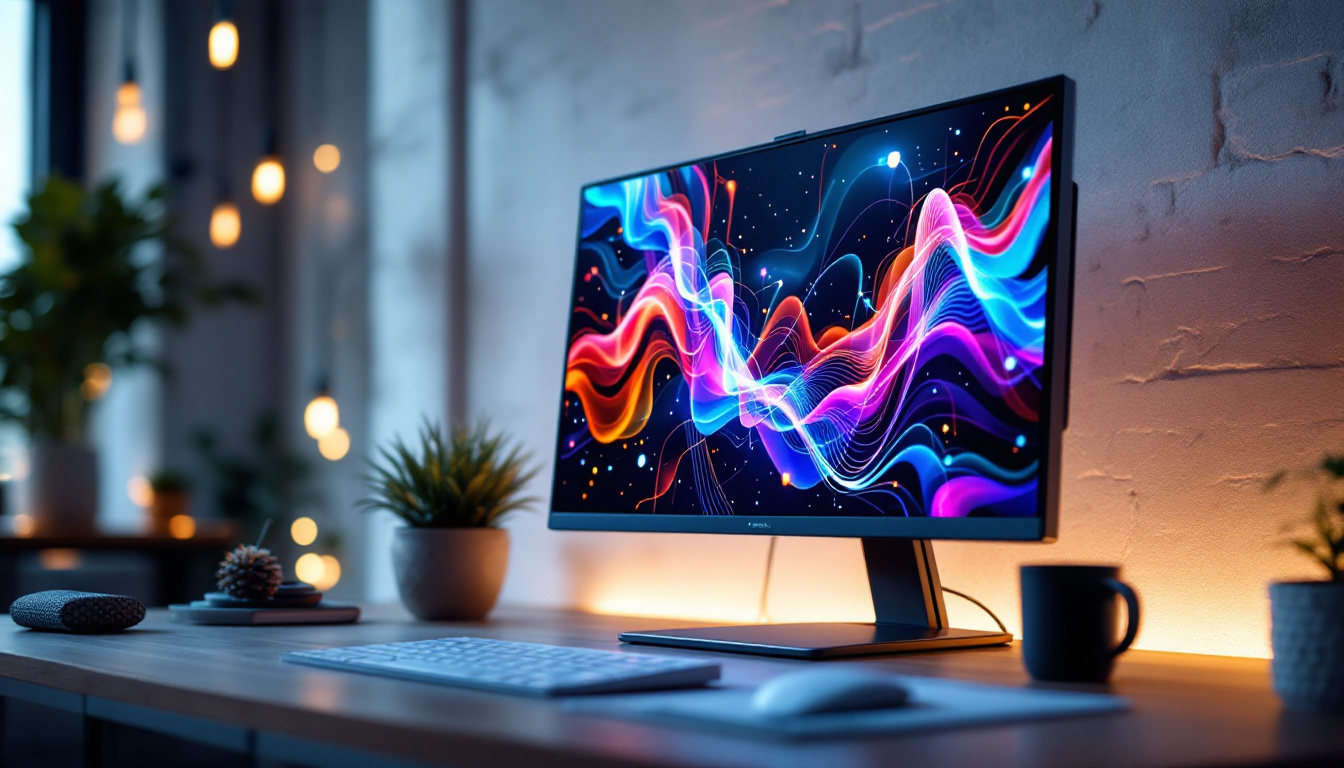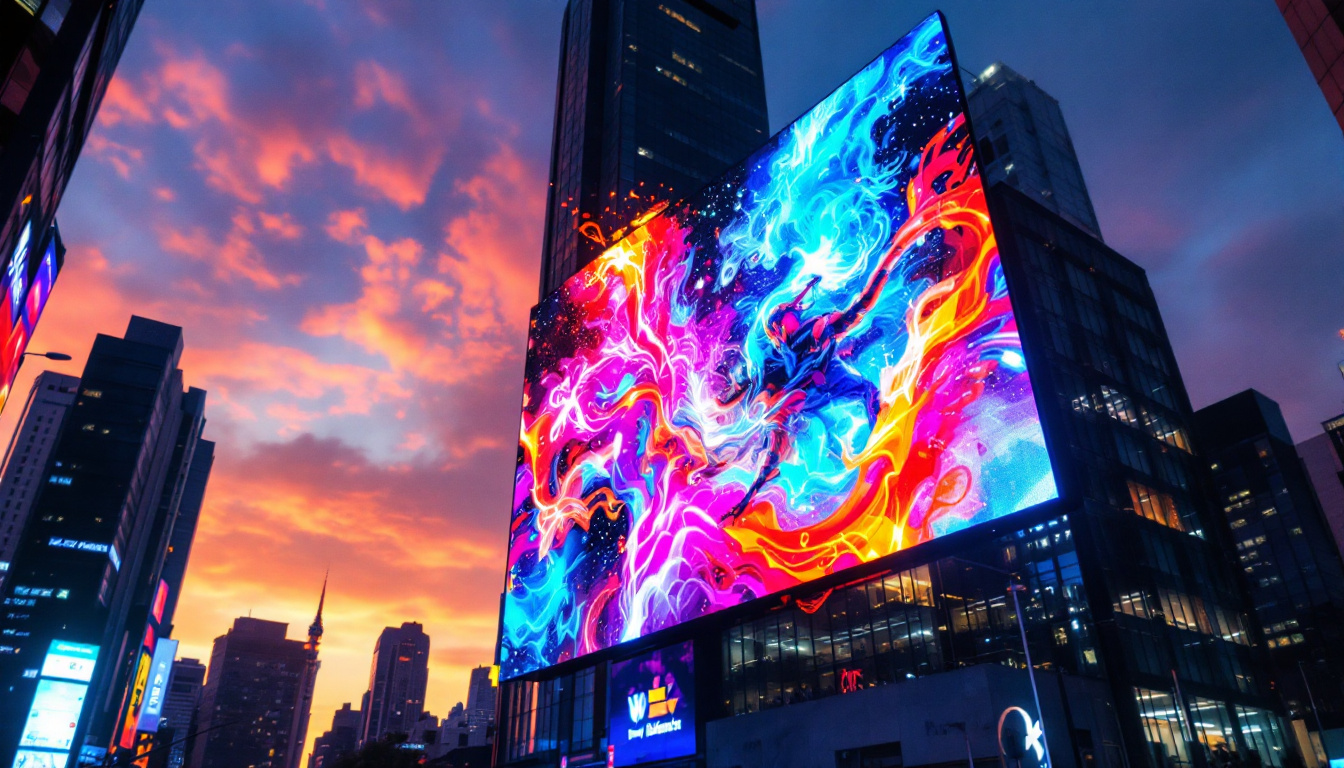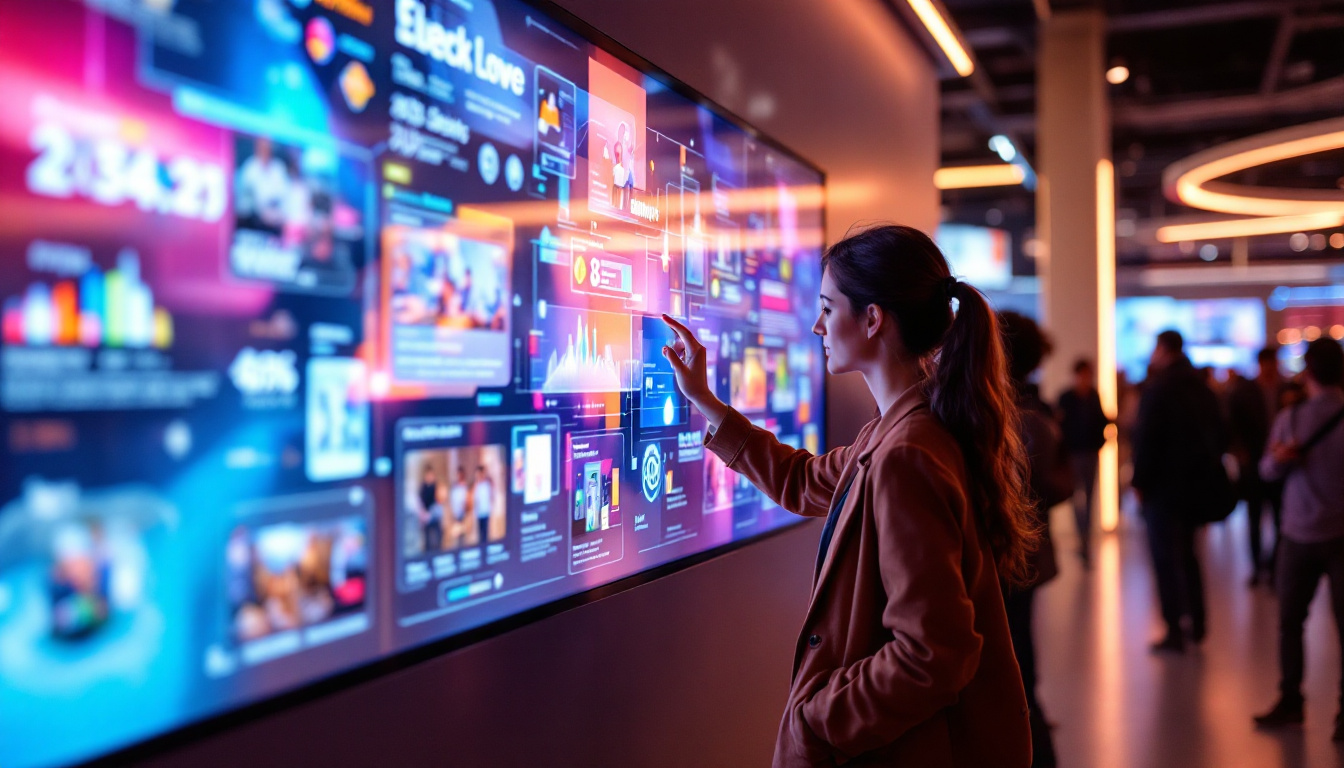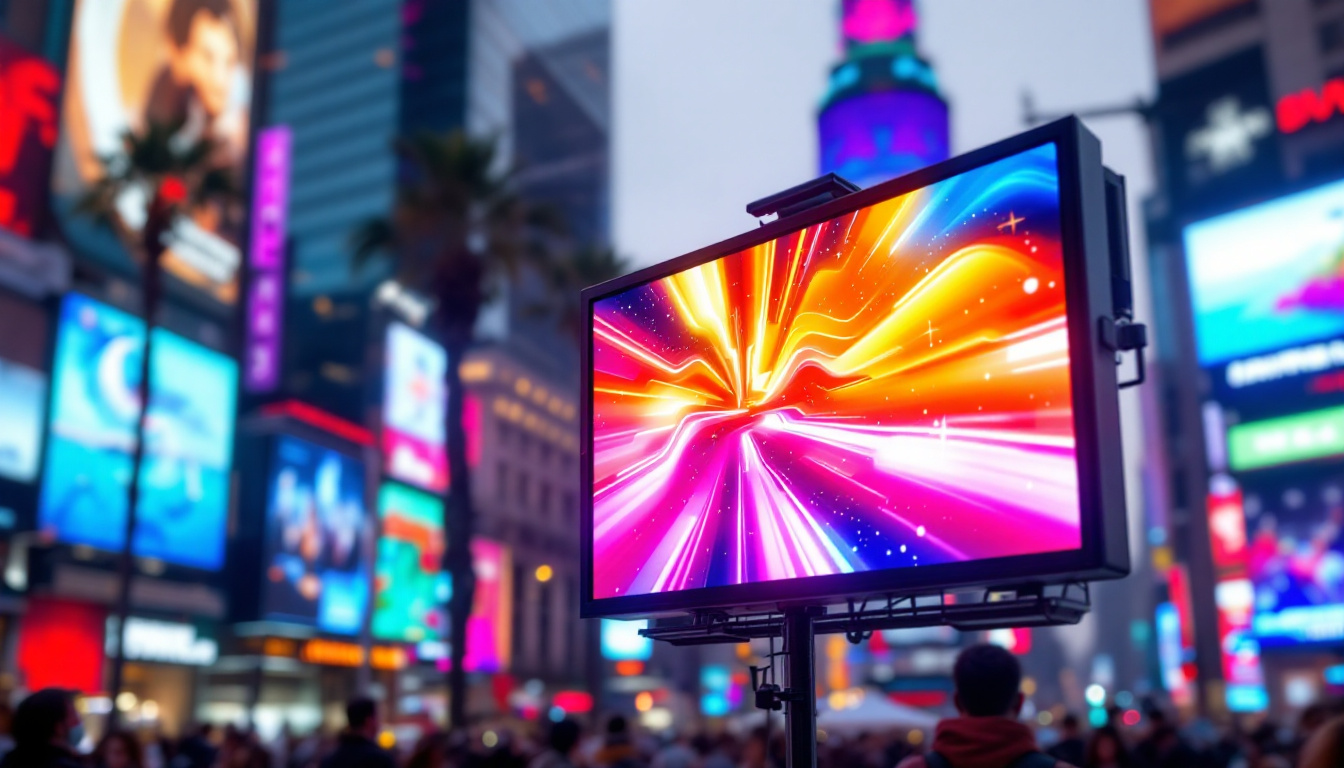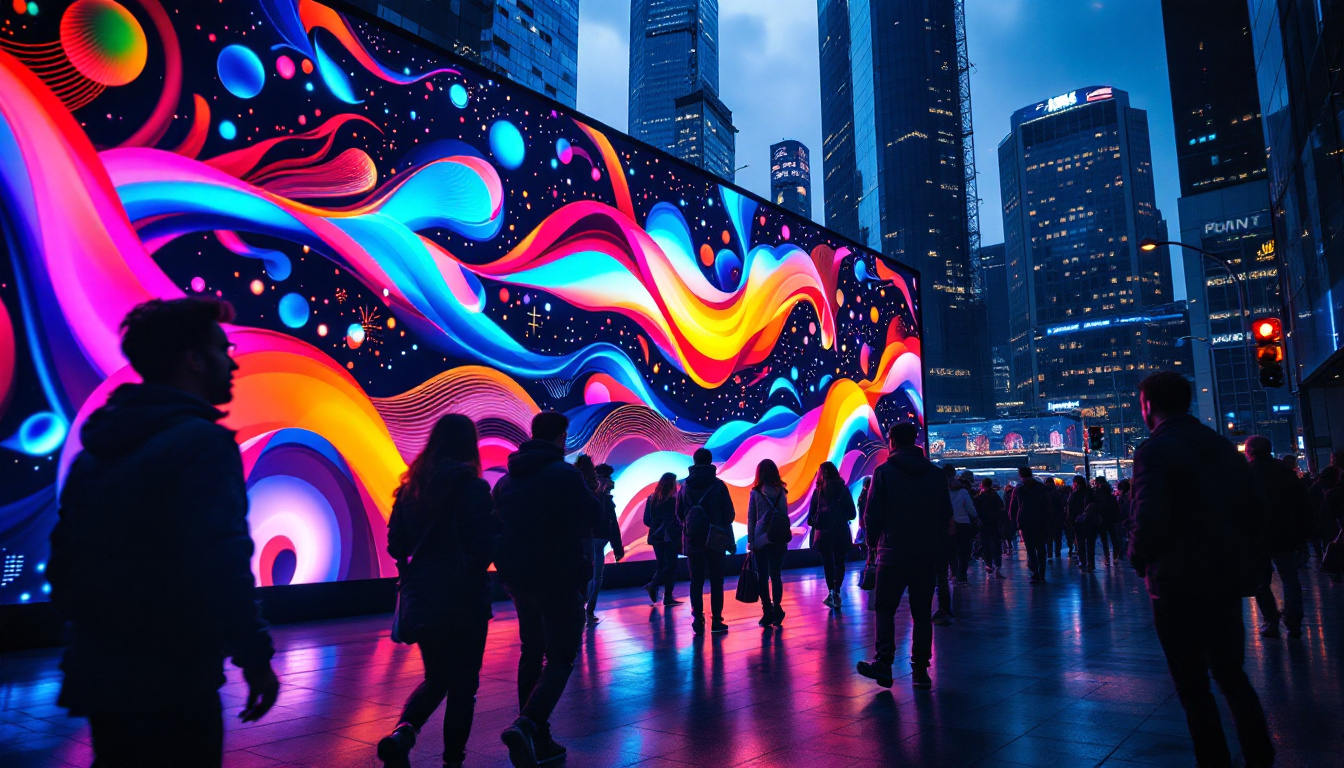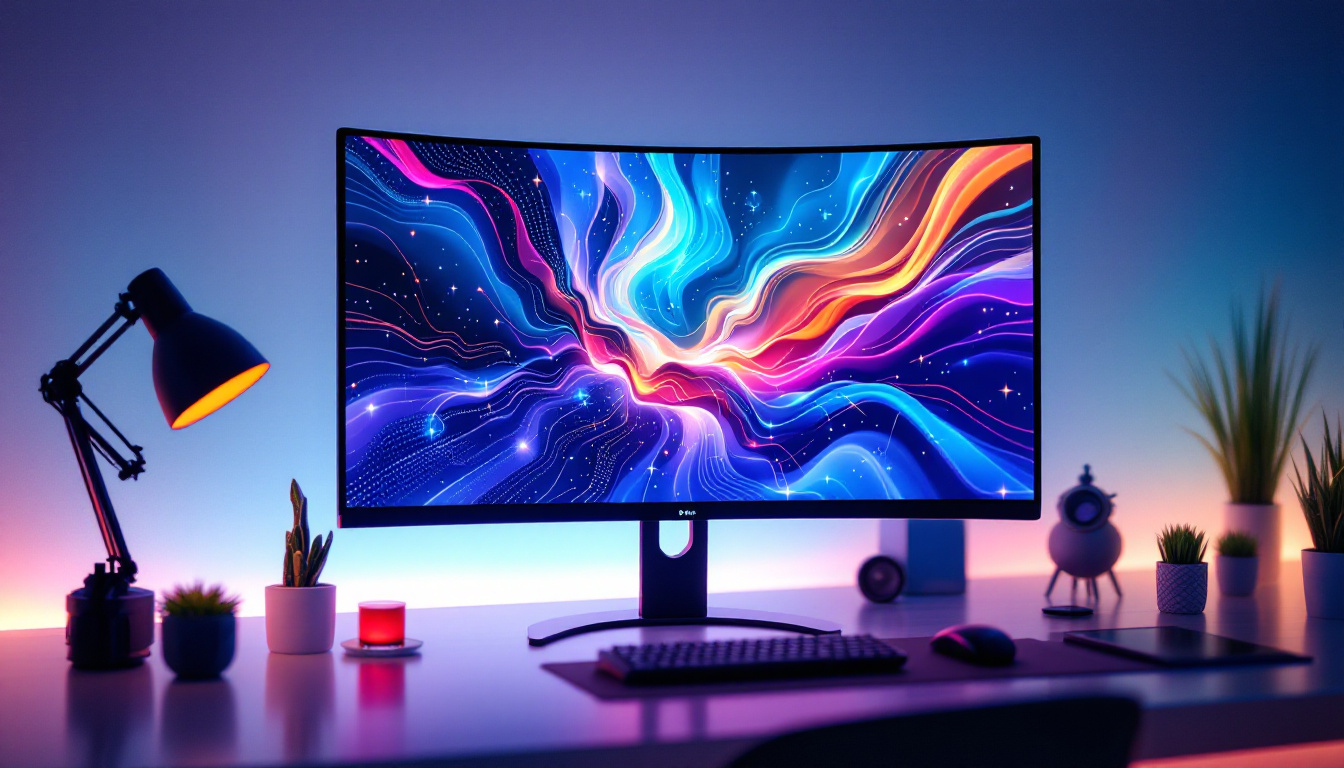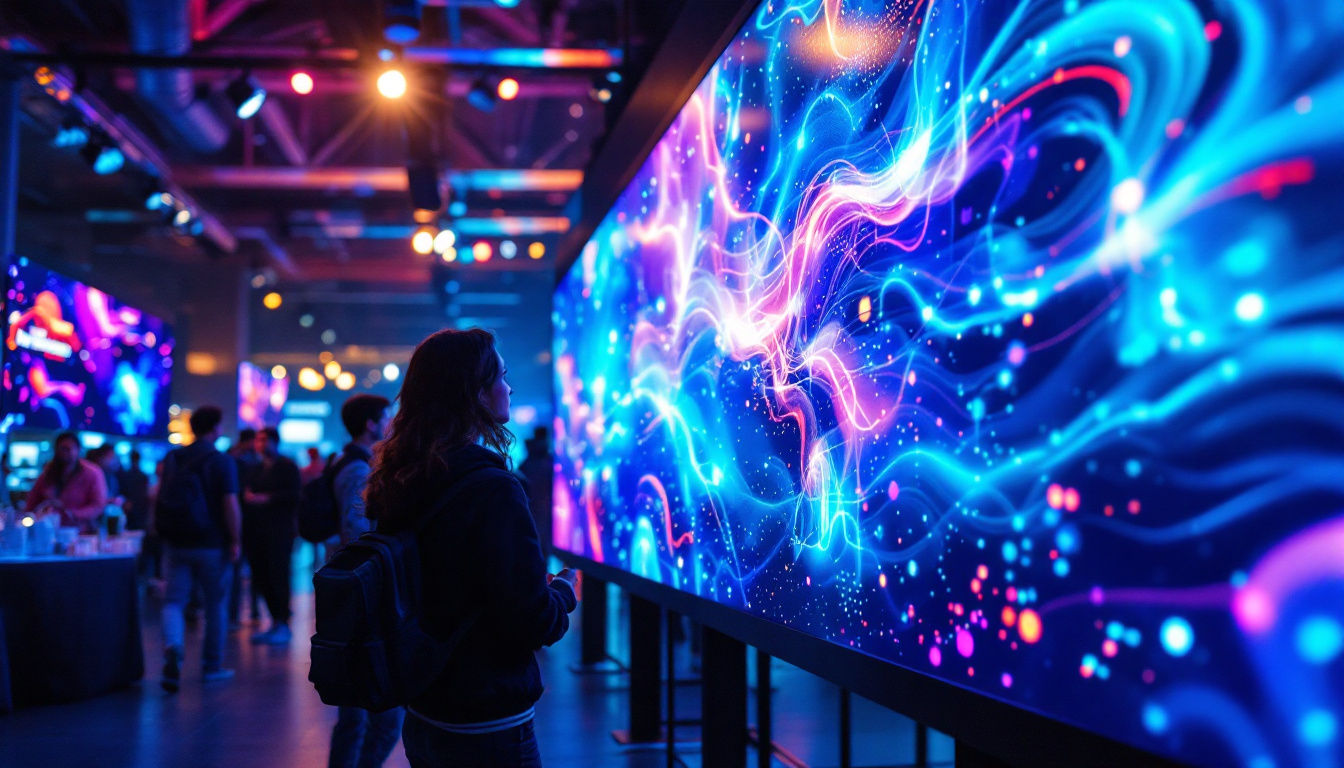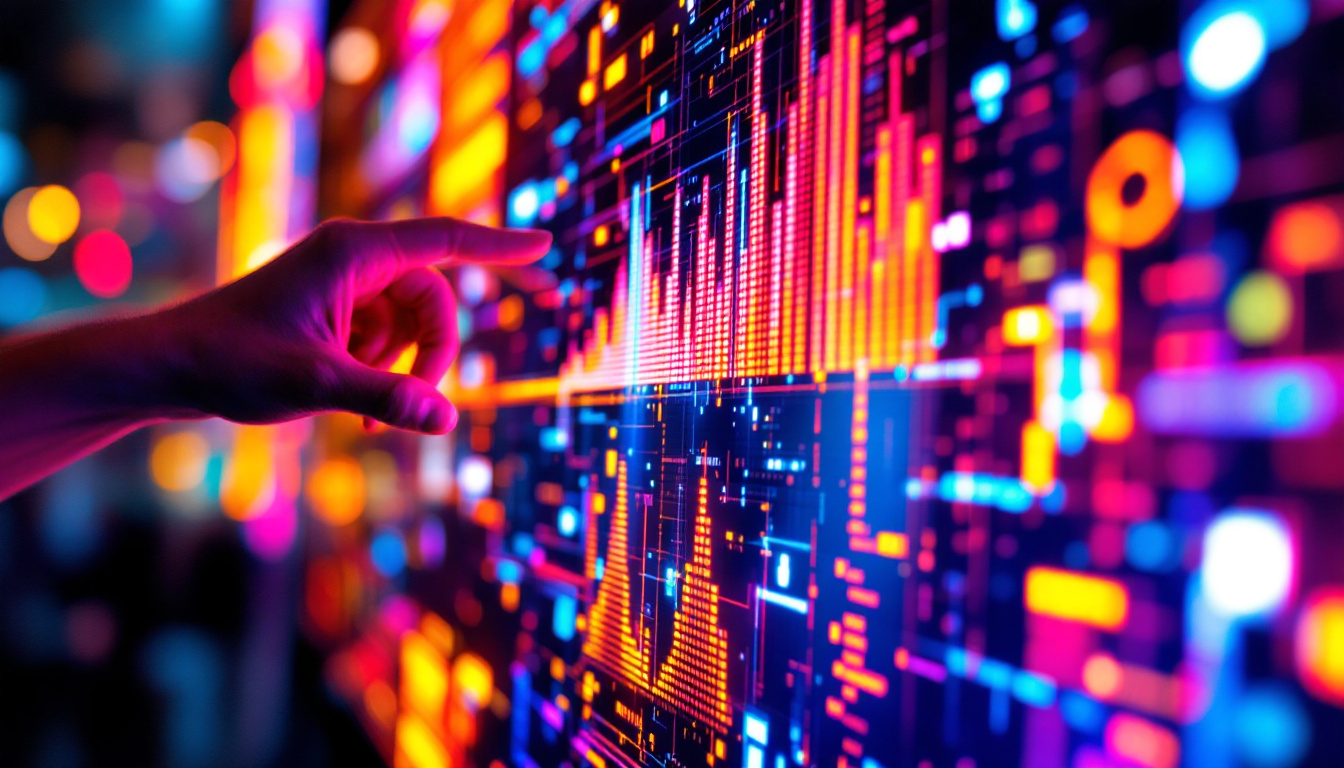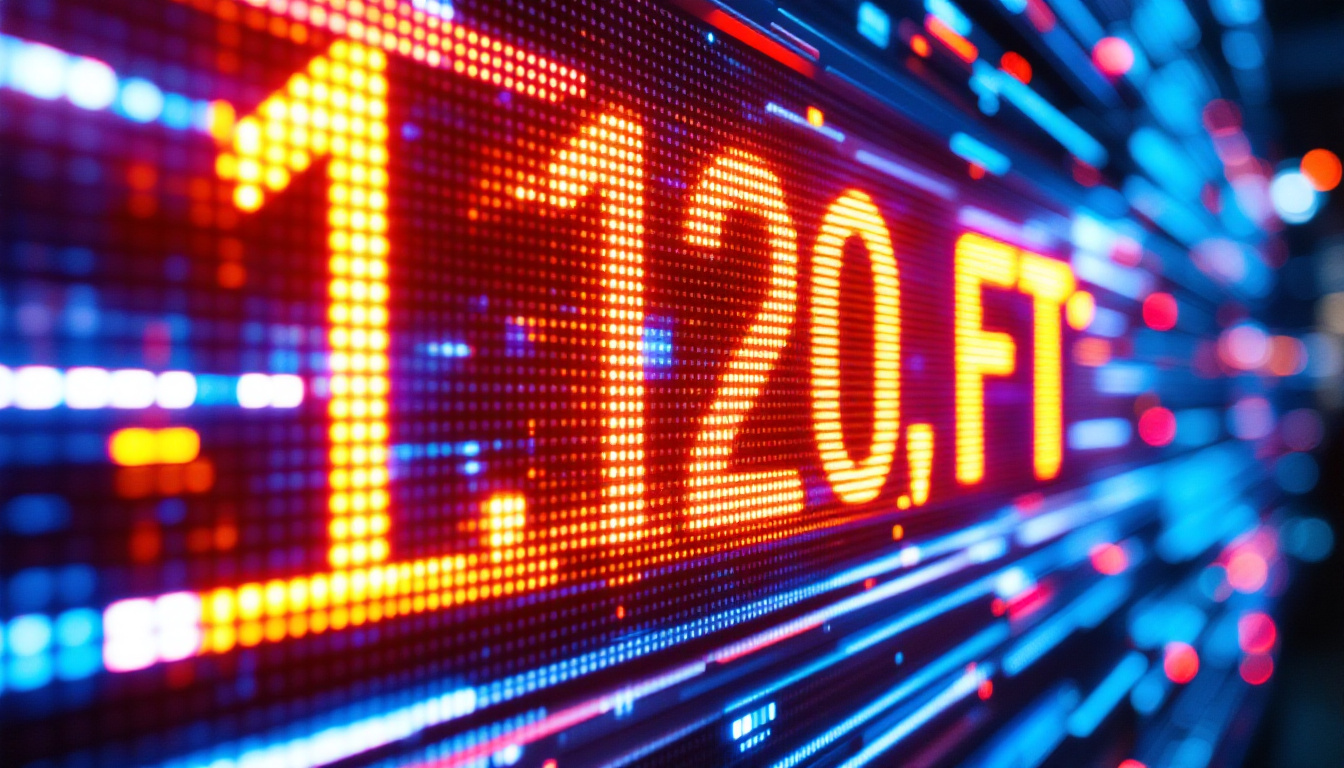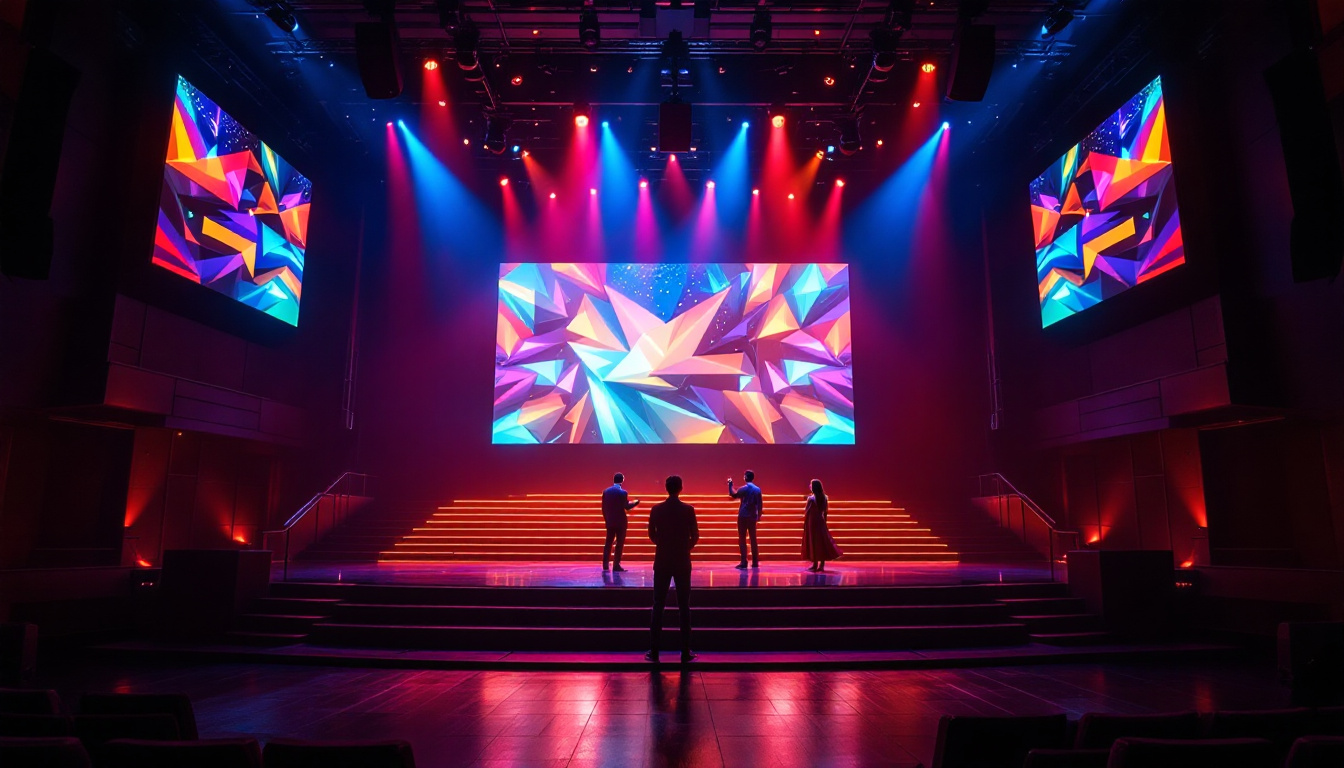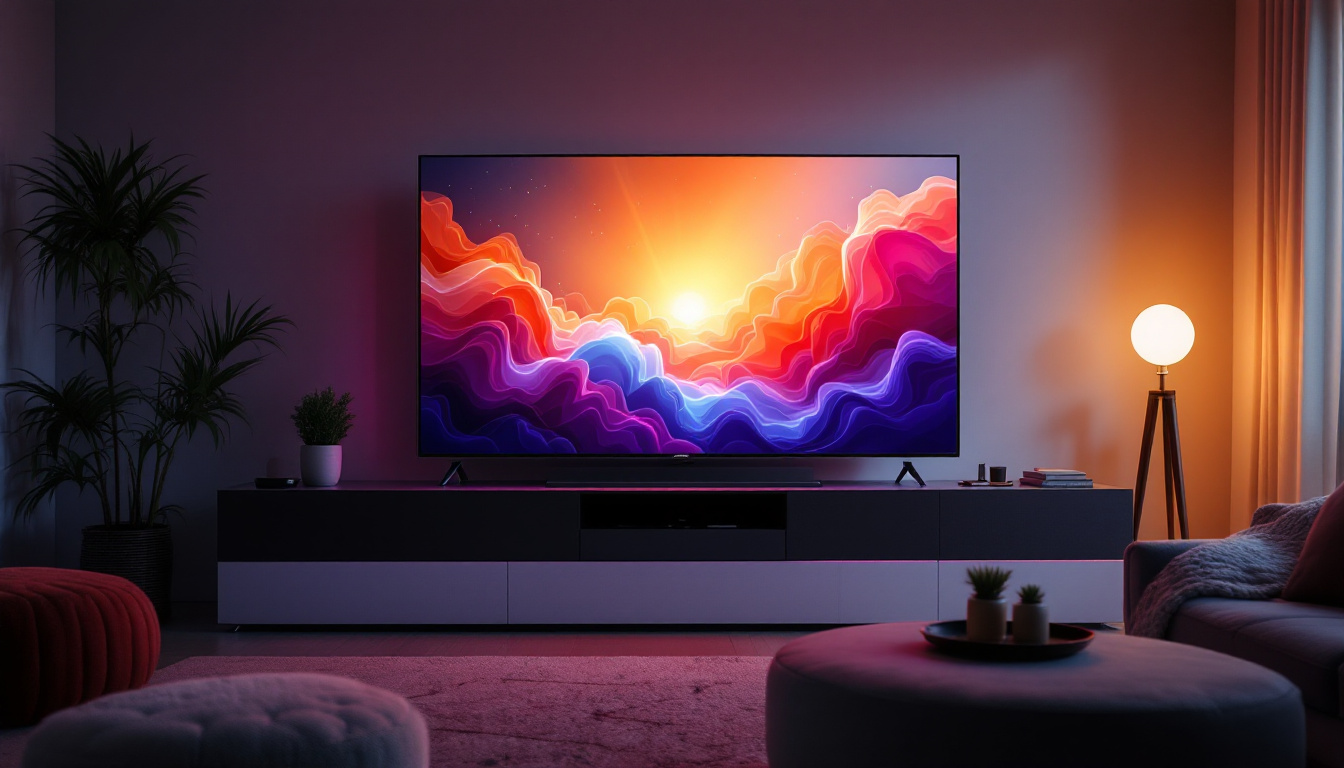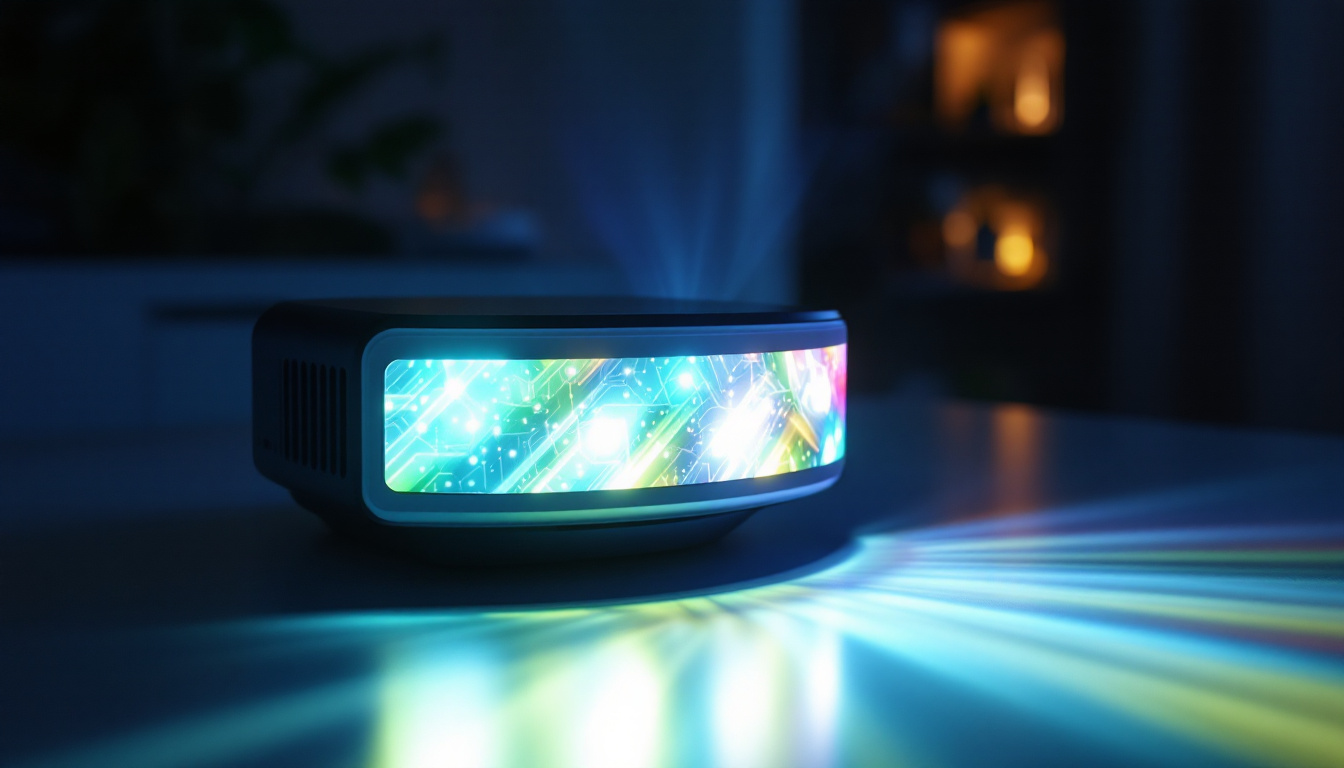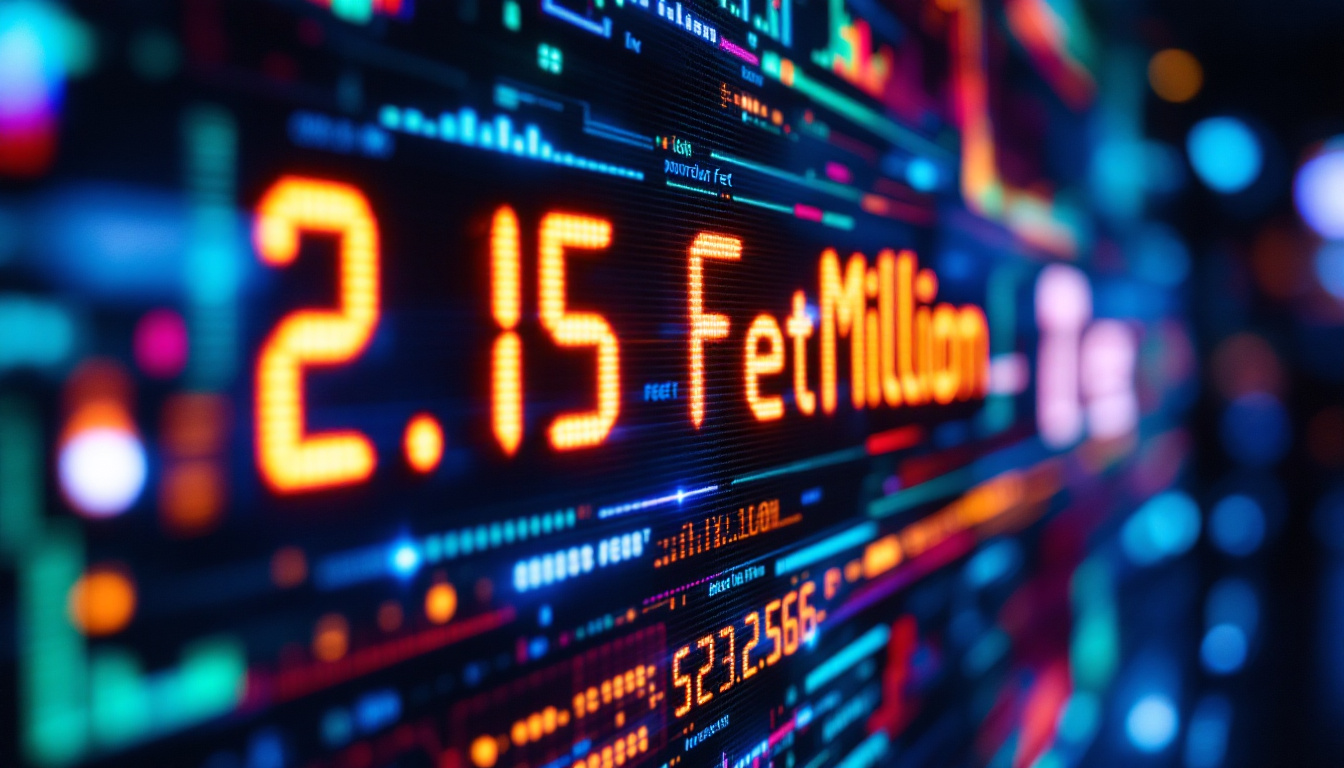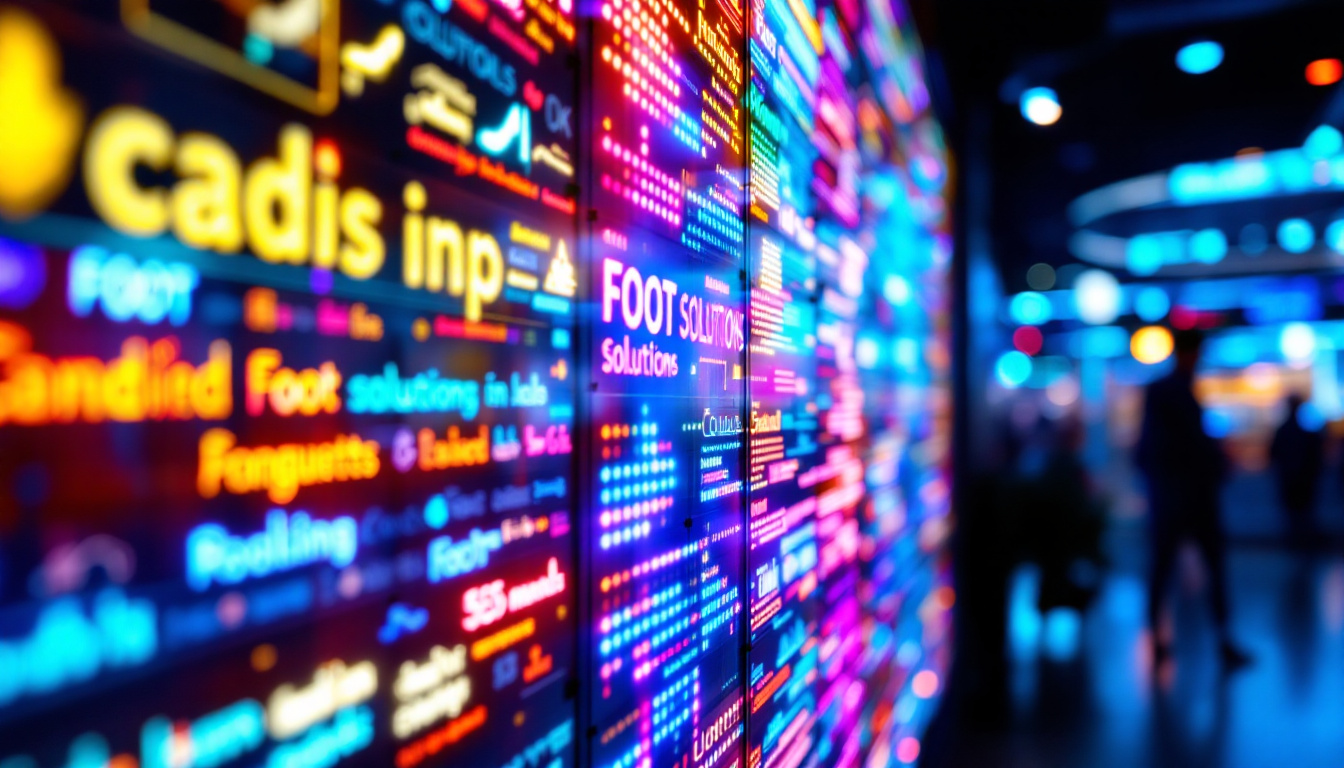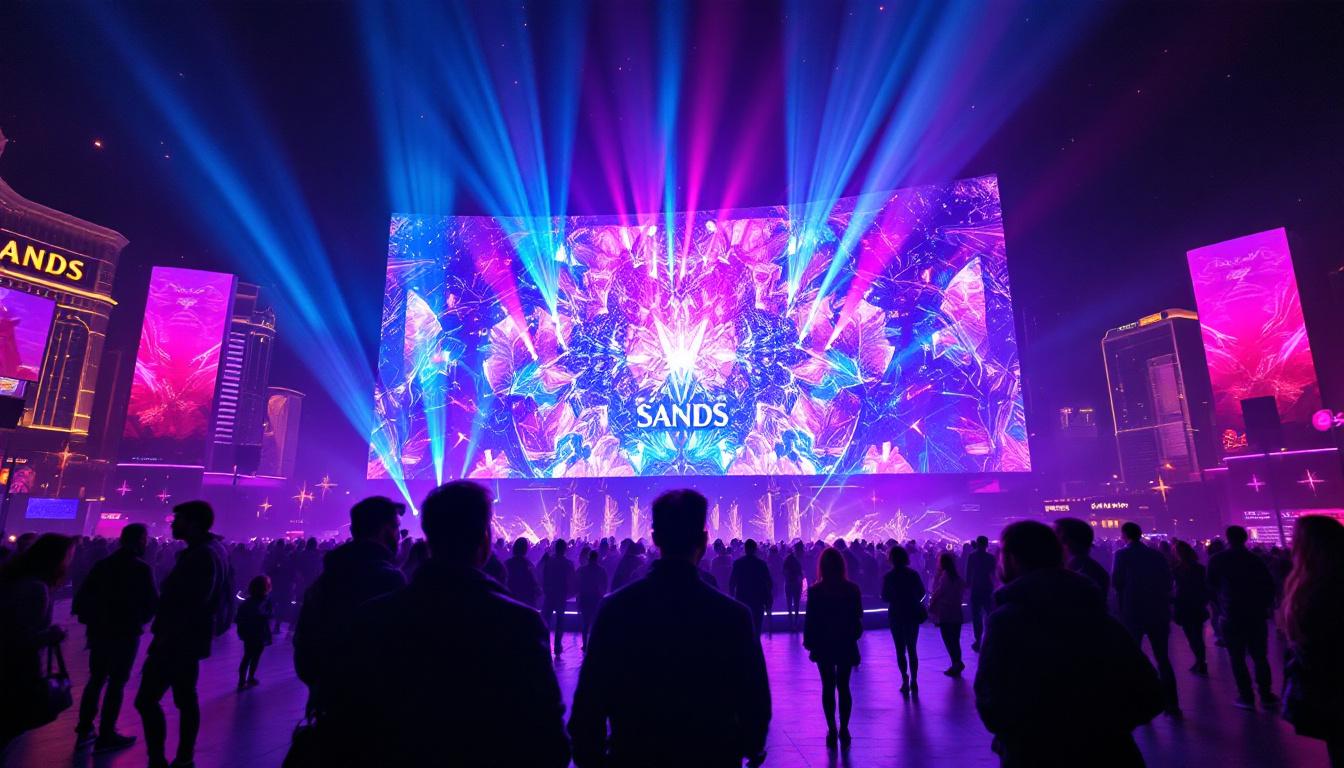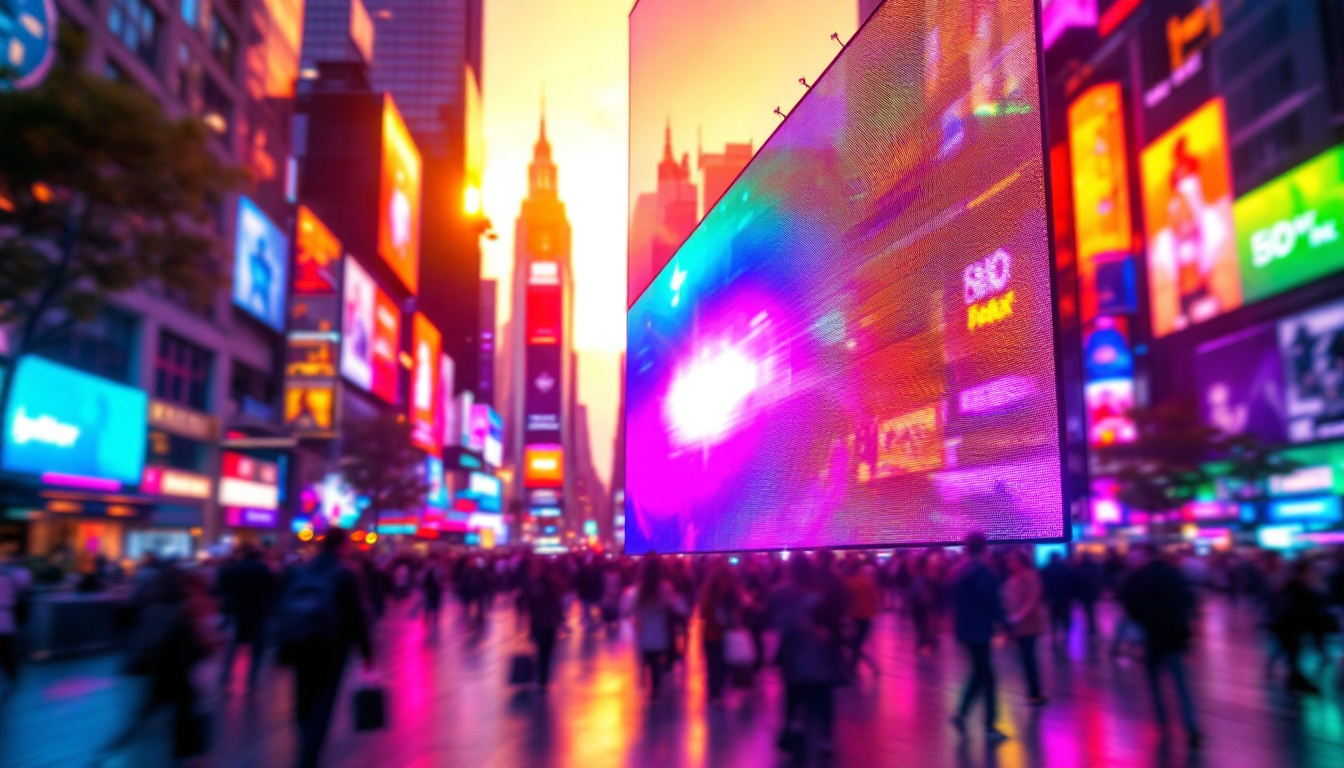In the rapidly evolving world of digital advertising and display technology, LED displays have emerged as a transformative force. They have become a staple in various industries, from entertainment to retail, thanks to their vibrant colors, high brightness, and versatility. This article delves into the intricacies of LED displays, exploring their technology, applications, and the future of this dynamic medium.
Understanding LED Technology
Light Emitting Diodes (LEDs) are semiconductor devices that emit light when an electric current passes through them. The technology has advanced significantly over the years, leading to the development of high-performance LED displays that are now widely used across various sectors. From advertising to entertainment, the versatility of LED technology has transformed how we perceive and interact with visual media.
The Basics of LED Functionality
At its core, an LED display consists of numerous tiny light-emitting diodes arranged in a grid. Each diode can emit red, green, or blue light, and by varying the intensity of these colors, a wide spectrum of colors can be produced. This RGB (Red, Green, Blue) model is fundamental to how LED displays create images and videos. The ability to mix these primary colors allows for the creation of millions of different shades, enabling a rich visual experience that is both vibrant and dynamic.
When combined in a pixel format, these diodes form a display that can show detailed images and videos. The resolution of an LED display is determined by the number of pixels it contains, which directly influences the clarity and detail of the visuals presented. Higher pixel density results in sharper images, making LED technology particularly appealing for applications requiring high resolution, such as digital signage and professional video production.
Types of LED Displays
LED displays can be categorized into several types based on their application and technology. The most common types include:
- Direct View LED Displays: These are made up of individual LEDs that create the image directly. They are often used for large outdoor billboards and screens, providing excellent visibility even in bright sunlight due to their high brightness levels.
- LED Backlit Displays: These displays use LEDs to illuminate an LCD panel from behind, enhancing brightness and color accuracy. This technology is prevalent in televisions and computer monitors, where energy efficiency and picture quality are paramount.
- Organic LED (OLED) Displays: Utilizing organic compounds, these displays offer superior contrast and color depth, making them popular in high-end televisions and mobile devices. The self-emissive nature of OLED technology allows for deeper blacks and a wider viewing angle, creating an immersive viewing experience.
In addition to these common types, there are also specialized LED displays designed for specific applications, such as transparent LED screens that allow for creative advertising solutions without obstructing views, and flexible LED panels that can be shaped to fit unique spaces. These innovations highlight the continuous evolution of LED technology, pushing the boundaries of what is possible in visual display solutions.
Furthermore, the environmental impact of LED technology cannot be overlooked. LEDs are known for their energy efficiency, consuming significantly less power compared to traditional incandescent or fluorescent lighting. This efficiency not only reduces electricity costs but also contributes to lower carbon emissions, making LEDs a more sustainable choice for lighting and display applications. As the world increasingly shifts towards eco-friendly solutions, the role of LED technology in promoting sustainability continues to grow.
Applications of LED Displays
LED displays are versatile and can be found in various settings, each serving unique purposes. Their ability to deliver bright, eye-catching visuals makes them ideal for numerous applications.
Advertising and Marketing
One of the most prominent uses of LED displays is in advertising. Retailers and businesses utilize large LED screens to showcase promotions, products, and services. The dynamic nature of LED displays allows for changing content in real-time, making them an effective tool for capturing consumer attention.
Digital billboards, often seen along highways and in urban areas, leverage LED technology to display advertisements that can be updated frequently. This flexibility allows advertisers to tailor their messages to different audiences and times of day, maximizing impact. Furthermore, the integration of sensors and data analytics can enhance targeting strategies, enabling businesses to deliver personalized content based on the demographics of viewers, such as age and gender, thus increasing the effectiveness of their campaigns.
Entertainment and Events
In the entertainment industry, LED displays are essential for concerts, sporting events, and festivals. They provide vibrant visuals that enhance the audience experience. Large LED screens are often set up at venues to display live feeds, graphics, and animations, creating an immersive environment.
Moreover, LED technology is used in stage backdrops and lighting, allowing for creative and captivating performances. The ability to synchronize visuals with music and performances adds an extra layer of excitement. Additionally, LED displays are increasingly utilized in virtual events and live-streaming scenarios, where they can create engaging experiences for remote audiences, bridging the gap between in-person and digital attendance.
Corporate and Educational Settings
LED displays are increasingly being adopted in corporate environments for presentations and meetings. Their high visibility ensures that information is easily seen by all attendees, even in large conference rooms. Interactive LED displays can also facilitate collaboration and engagement during discussions.
In educational settings, LED screens are becoming popular as teaching aids. They can display educational content, videos, and interactive lessons, making learning more engaging for students. The bright and clear visuals help maintain attention and improve information retention. Furthermore, with the rise of hybrid learning models, LED displays can support remote learning by providing a platform for interactive sessions, allowing teachers to connect with students in real-time, regardless of their physical location. This adaptability not only enhances the learning experience but also prepares students for a future where digital literacy is paramount.
Advantages of LED Displays
The advantages of LED displays are numerous, contributing to their widespread adoption across various industries. Understanding these benefits can help businesses and organizations make informed decisions about integrating this technology.
Energy Efficiency
One of the most significant benefits of LED displays is their energy efficiency. Compared to traditional display technologies, such as LCD and plasma, LED displays consume less power while providing superior brightness. This not only reduces electricity costs but also minimizes the environmental impact, making them a more sustainable choice.
Longevity and Durability
LED displays are known for their long lifespan, often lasting tens of thousands of hours. This durability means lower maintenance and replacement costs over time. Additionally, LED technology is less susceptible to damage from environmental factors, making them suitable for outdoor use.
High Brightness and Visibility
LED displays can achieve remarkable brightness levels, making them easily visible in various lighting conditions, including direct sunlight. This feature is particularly advantageous for outdoor advertising and events, where visibility is crucial for capturing attention.
Challenges and Considerations
While LED displays offer numerous advantages, there are also challenges and considerations that potential users should be aware of. Addressing these factors can help ensure successful implementation and operation.
Initial Costs
The initial investment for LED displays can be significant, especially for large installations. Businesses must weigh the upfront costs against the long-term benefits and savings. However, as technology advances, prices are gradually decreasing, making LED displays more accessible.
Content Management
Effective content management is crucial for maximizing the impact of LED displays. Organizations need to invest in software and systems to create, schedule, and update content efficiently. Without proper content management, the potential of LED displays may not be fully realized.
Technical Expertise
Operating and maintaining LED displays may require specialized knowledge and skills. Organizations may need to train staff or hire experts to ensure optimal performance and troubleshoot any issues that arise. This requirement can be a barrier for some businesses.
The Future of LED Displays
The future of LED displays looks promising, with continuous advancements in technology and applications. As industries evolve, LED displays are likely to play an even more significant role in shaping visual communication.
Innovations in Technology
Emerging technologies, such as microLED and miniLED, are set to revolutionize the display landscape. These innovations promise even higher resolutions, improved color accuracy, and greater energy efficiency. As these technologies mature, they will open new possibilities for LED displays in various applications.
Integration with Smart Systems
As the world becomes increasingly interconnected, the integration of LED displays with smart systems and IoT (Internet of Things) technology is expected to grow. This integration will enable real-time data display, personalized content, and enhanced interactivity, creating more engaging user experiences.
Environmental Considerations
With growing awareness of environmental issues, the demand for sustainable display solutions is on the rise. LED technology, known for its energy efficiency and longevity, aligns well with these sustainability goals. Future developments may focus on using recyclable materials and reducing the carbon footprint of manufacturing processes.
Conclusion
LED displays have transformed the way information is communicated and experienced across various sectors. Their vibrant visuals, energy efficiency, and versatility make them an invaluable tool for businesses and organizations. While challenges exist, the benefits far outweigh them, and with ongoing technological advancements, the future of LED displays is bright.
As industries continue to explore new applications and innovations, LED displays will undoubtedly remain at the forefront of visual communication. Embracing this technology can lead to enhanced engagement, improved brand visibility, and a more dynamic way to connect with audiences.
Discover Cutting-Edge LED Solutions with LumenMatrix
Ready to elevate your visual communication and captivate your audience like never before? LumenMatrix is at the forefront of LED display innovation, offering a wide array of solutions including Indoor and Outdoor LED Wall Displays, Vehicle LED Displays, LED Poster Displays, LED Sports Displays, Floor LED Displays, Custom LED Displays, All-in-One LED Displays, and LED Transparent Displays. Embrace the future of digital signage with LumenMatrix and transform your brand’s presence. Check out LumenMatrix LED Display Solutions today and experience the power of advanced LED technology.

